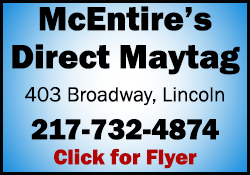|
 As cancer drug prices spiral, the arrival of the first biosimilars
or copies of biotech drugs, ones made inside living cells, puts
European oncologist in the forefront of a treatment shift that could
slash costs and expand patient access. As cancer drug prices spiral, the arrival of the first biosimilars
or copies of biotech drugs, ones made inside living cells, puts
European oncologist in the forefront of a treatment shift that could
slash costs and expand patient access.
Copycat versions of Rituxan, also known as MabThera, and Herceptin
have faced several delays in development in the past.
This time the world's biggest cancer drugmaker cannot escape the
competition. Approval from the pan-European regulator, the European
Medicines Agency (EMA), is pending and preparations are under way
for the launch of a Rituxan biosimilar from South Korea's Celltrion.
"We're expecting it to be available shortly," Andrew Roberts of Napp
Pharmaceuticals, which will sell the intravenous drug in Britain,
told Reuters.
The EMA does not comment on upcoming approvals but its website shows
it is assessing two biosimilar versions of Rituxan and three of
Herceptin.

Industry analysts believe Mylan and its partner Biocon may win a
green light for the first Herceptin biosimilar in Europe later this
year.
Big numbers are at stake. Rituxan sold $7.3 billion worldwide last
year, while Herceptin brought in $6.75 billion. Although copies of
both are sold in parts of Asia, Europe is the first large market,
with U.S. launches still some way off.
Investors have been concerned about how quickly doctors would trust
the new drugs but cancer experts and healthcare providers, worried
about the finances of Europe's healthcare system, say they plan to
embrace the cut-price medicines.
Oncologist see savings creating financial headroom for a new wave of
even more expensive immunotherapy drugs that are revolutionizing
cancer care but can cost more than $100,000 per patient.
"Whether it's in the public or the private sector, we need to
provide sustainable healthcare and biosimilars are clearly a good
way to improve affordability," said Josep Tabernero, head of medical
oncology at the Vall díHebron University Hospital in Barcelona.
Tabernero believes uptake will be just as good as for biosimilar
rheumatoid arthritis drugs, known as anti-TNFs, which were launched
in Europe a couple of years back.
While it took a few months for physicians to get comfortable with
those first antibody copycats, demand has since taken off and
competition has driven down anti-TNF prices substantially.
50 PERCENT DISCOUNT
Because biotech drugs are made inside living cells it is impossible
to make exact generic copies, as happens with simple pills, so
regulators have come up with the notion of approving products that
are "similar" enough to do the job.
That makes developing them relatively costly, leading to initial
expectations of only modest price discounts.

Yet biosimilar anti-TNFs now sell at around a 50 percent discount
and Novartis, whose Sandoz unit has one of the biggest biosimilars
portfolios, reckons discounts could widen to as high as 75 percent
in some instances.
[to top of second column] |

Tabernero, who is president-elect of the European Society of Medical
Oncology and co-wrote a technical paper last month putting the case
for biosimilars, told Reuters he would "love to see discounts of 40
to 60 percent". [http://bit.ly/2lGPT2j]
Based on the rheumatology experience, discounts are likely to start
out at around 30 percent.
"If European oncologists are offered highly effective biosimilar
agents at a better price, I'm sure they will receive them extremely
positively," said Paul Workman, chief executive of Britain's
Institute of Cancer Research.
Officials running Europe's national healthcare systems are also
paying close attention. Nordic countries and Germany have led the
way in using biosimilars but others are now taking action to drive
up biosimilar use.
Britain, for example, which spends more than 300 million pounds
($375 million) on Rituxan and Herceptin, has set a target for 90
percent of new patients treated in National Health Service hospitals
to get biosimilars in future.
And the British Oncology Pharmacy Association declared last week it
was committed to optimizing the use of biosimilar antibodies in
cancer treatment.
New cancer patients, rather than those already started on an
existing medicine, are the group most likely to receive biosimilars,
at least initially. Still, the nature of treatment, often involving
multiple therapy regimens, means this may not hinder biosimilar
uptake in the medium-term.
"We won't see instant uptake in every area but we would still expect
much faster uptake than has been seen in the past with biosimilars,"
said Napp's Roberts.

The EMA has to date approved 23 biosimilars against just four in the
United States.
"The EMA has done a good job. It realized many years ago that this
is very strategic for managing drug costs in Europe and they set
clear, understandable guidelines very early on," said Oliver Kubli
of Bellevue Asset Management in Zurich.
With a run of patent expiries on blockbuster biotech drugs lasting
until around 2022, he is betting on a surge in sales for biosimilar
manufacturers in the coming years, even with price discounts of 50
to 70 percent.
Roche acknowledged this month it would see some erosion from
biosimilars this year, although it is hoping to offset this with
better or more convenient follow-on products.
(Editing by Anna Willard)
[© 2017 Thomson Reuters. All rights
reserved.] Copyright 2017 Reuters. All rights reserved. This material may not be published,
broadcast, rewritten or redistributed. |